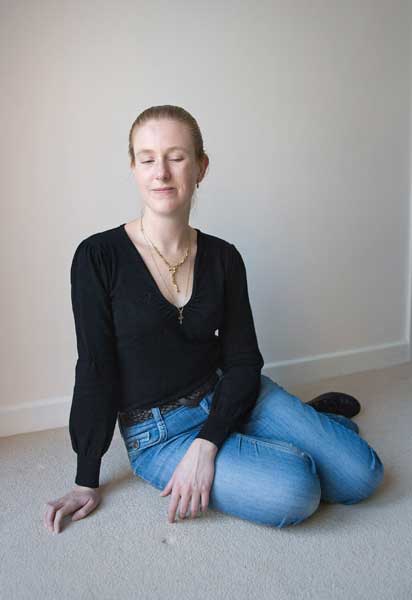First Person: 'I hear sounds in colour'
Angela Purll, 28

I was just nine years old when an accident claimed my vision, changing the way I perceived the world around me for ever.
It was during a PE class at school: I tripped over a mat that hadn't been secured properly and hit the side of my head hard on the bar of a climbing frame. The impact blinded me instantly in my left eye, the vision in my other slowly deteriorated until I was completely blind by the age of 13.
The aftermath of the situation hit my family hard; my grandfather had three heart attacks within the space of 24 hours and my father suffered a punctured stomach ulcer.
The school refused to have me back after the accident. I missed two years of school as a result. Eventually I found sanctuary at the Royal London Society for the Blind specialist school, Dorton House, in Sevenoaks, Kent.
It was there that I began to unlock my ability to hear in colour, a near- indescribable sensation which I would later learn is known as "synaesthesia". I developed my love for music at Dorton House, a passion which I'd had for many years having learnt to play the organ from the age of eight.
At Dorton, I learnt to read Braille sheet music, enabling me to revive my passion, which I took to GCSE with the unwavering support of my teachers.
I didn't learn that my ability to hear colour was synaesthesia until I was studying for my undergraduate music degree at the Trinity College of Music in Greenwich. By chance, I caught a programme on the radio about the subject and it really chimed with me.
Anything can make me sense a colour, whether it's a particular sound, smell or touch. Some sounds appear patterned, or are mixed with lighter splotches, and some can be as rich and varied as the weft of a tapestry. Higher-pitched sounds are usually lighter colours and lower-pitched ones duller.
With smell I can only sense colour when it's something particularly strong, such as a fragrant perfume, which might be a bright pink or the smell of burnt toast, which is often black or brown.
The experience of being able to sense colours started to become more apparent after I found out about synaesthesia – I began to be more aware of colours in music and started to turn this to my advantage.
It helps me to memorise pieces, and I can often translate a piece into a sketch or a drawing to visualise it. String orchestras paint a wonderfully grassy-green image for me, and compositions in a minor key often have a duller or softer tone of colour.
I like to write in the key of A or C, bright orange or yellow tones, or in D for red, livelier pieces. The key of G has a gentle, quite purple tone and works in the key of B are blue.
I performed my first composition in October at Hever church, near my home in Edenbridge, Kent. I used flute and organ to explore colours and textures that paint vibrant pictures for me.
I feel blessed with my ability today. The journey my family and I have been on since that day in the school gym 19 years ago has been long and hard, though I'm glad to say we've pulled through.
I am now studying part-time for a masters degree in music performance at Trinity College of Music. The rest of the time, I teach flute in schools and play flute, whistles and piano accordion with my folk band, Round House Folk.
Because I'm blind people presume that I live in a world of darkness. They're very wrong; I hear colour all around me in an overwhelming explosion of sensations. There are rarely any down-sides to my synaesthesia and I couldn't imagine living without it.
Subscribe to Independent Premium to bookmark this article
Want to bookmark your favourite articles and stories to read or reference later? Start your Independent Premium subscription today.

Join our commenting forum
Join thought-provoking conversations, follow other Independent readers and see their replies